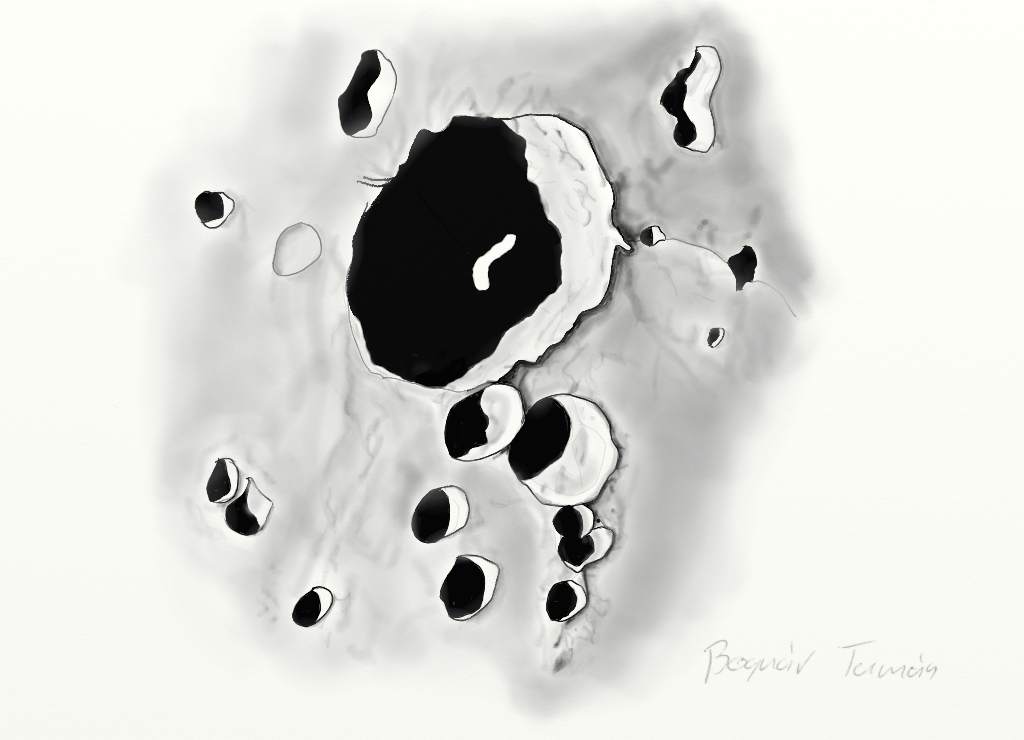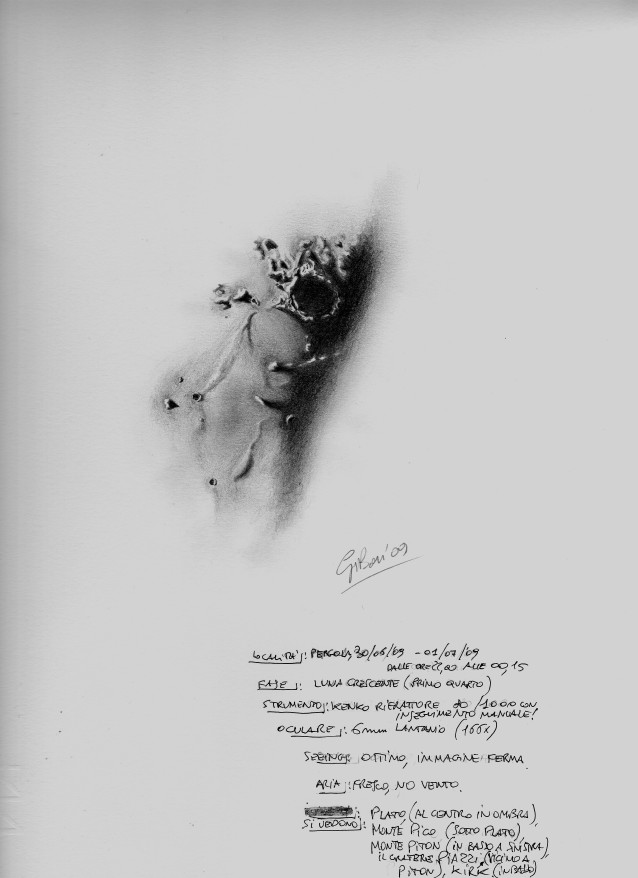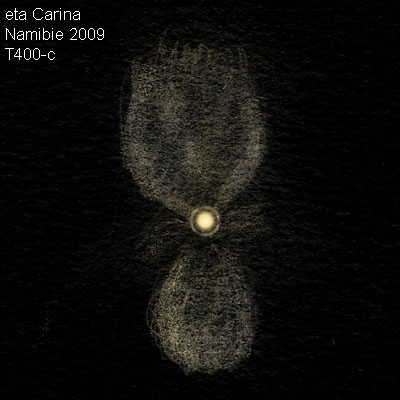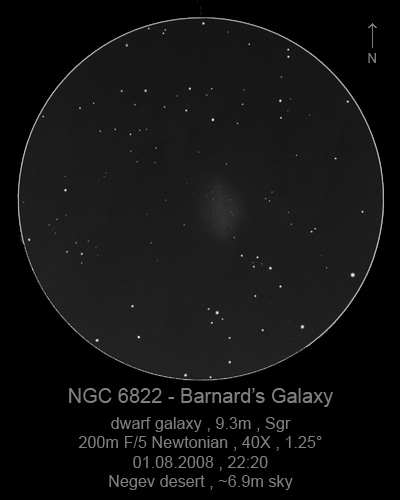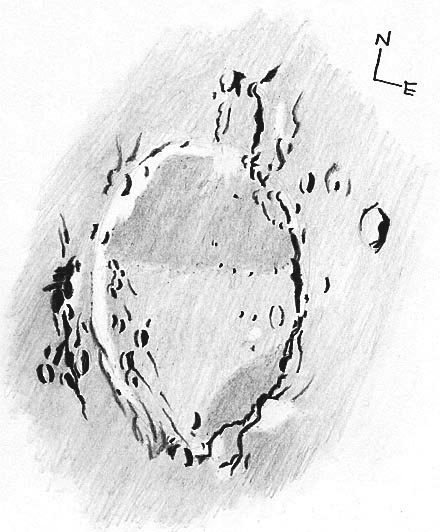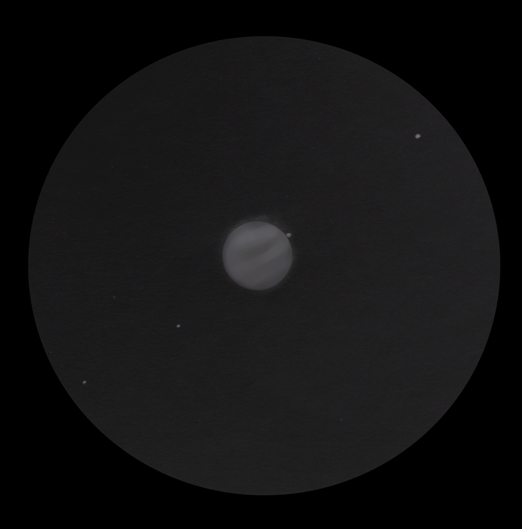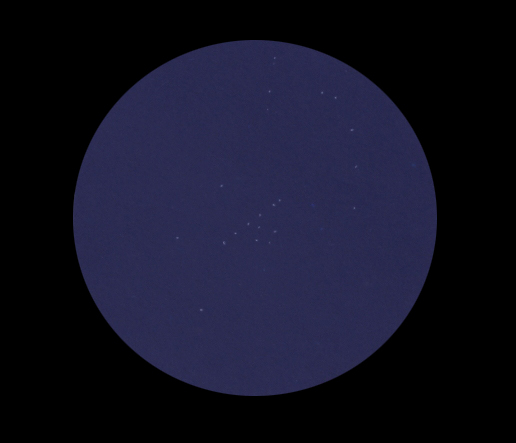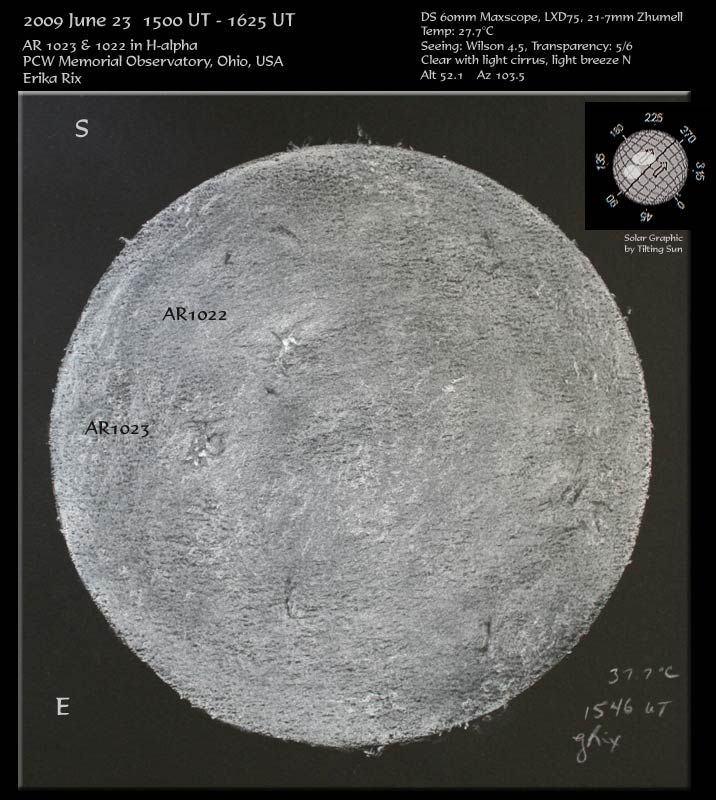
Solar h-alpha, AR1023 and 1022: 2009 June 23
Sketch and Details by Erika Rix
2009 June 23, 1500UT – 1625UT
Solar h-alpha and White light, ARs 1023 & 1022
Erika Rix
PCW Memorial Observatory, Zanesville, Ohio USA
H-alpha 1546 UT, DS 60mm Maxscope, LXD75, 21-7mm Zhumell
Temp: 27.7°C
Seeing: Wilson 4.5, Transparency: 5/6
Clear with light cirrus, light breeze N
Alt 52.1 Az 103.5
Sketch created scopeside with black Strathmore Artagain paper, white
Conte’ crayon and pencil, white Prang watercolor pencil, black oil pencil.
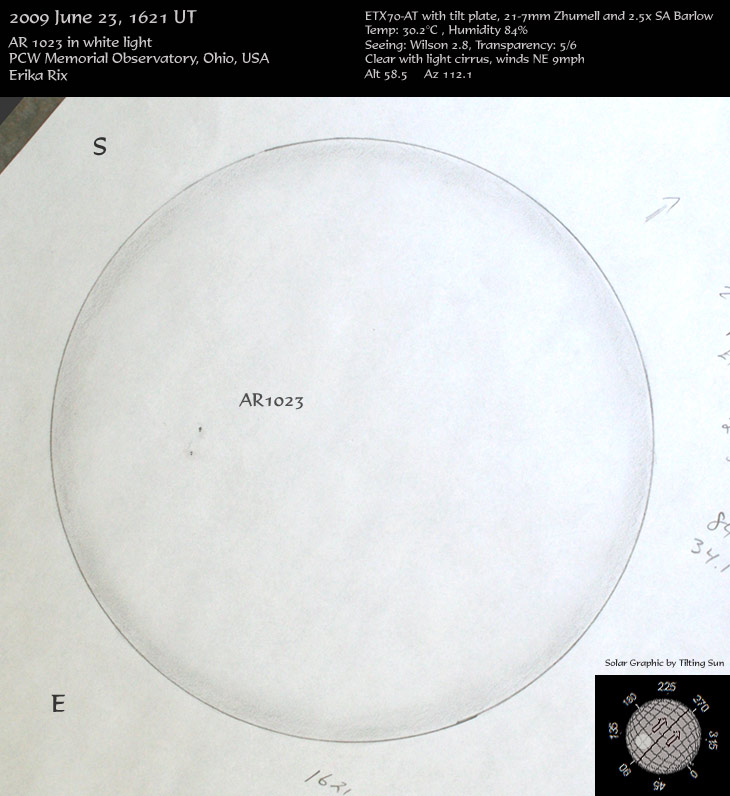
Solar white light, AR1023 and 1022: 2009 June 23, 1621UT
Sketch and Details by Erika Rix
White light 1621 UT, ETX70-AT with tilt plate, 21-7mm Zhumell and 2.5x
SA Barlow
Temp: 30.2°C , Humidity 84%
Seeing: Wilson 2.8, Transparency: 5/6
Clear with light cirrus, winds NE 9mph
Alt 58.5 Az 112.1
Sketch created scopeside with white photocopy paper and #2 pencil.
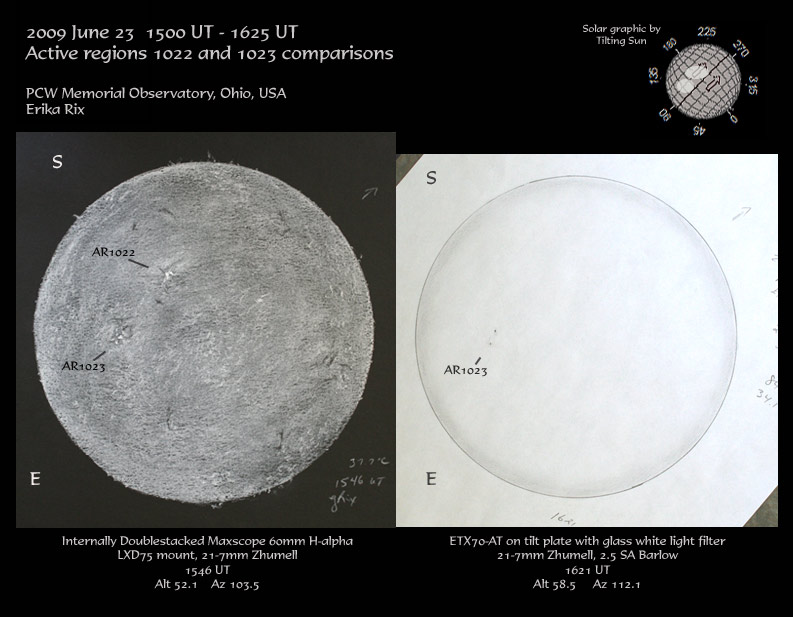
Solar H-alpha and white light comparison: 2009 June 23, 1500UT-1625UT
Sketch and Details by Erika Rix
This morning, I moved the solar rigs outside for better seeing
conditions. After all the rains and then full sun today, the coolness
of the grassy fields would be a significant improvement over the hot
wood and carpet from inside the observatory. It appears my decision was
the correct one because I started the solar session off with h-alpha and
was able to not only increase mags to a 7mm, but used a 2.5x Barlow
toward the end of the
h-alpha session for deeper observing. The seeing became much worse
about an hour later when I began my white light filter observation.
Both active regions were obvious and 1023 almost looked like an “X”
shaped plage with a hint of a spot to the western crook of it. There was
another plage on the other side of that spot with a very prominent
filament reaching to the west, although very small with a more obvious
spot at the eastern start of it. Moving west across the disk, AR1022
was almost a “U” shaped plage resembling a pair of oxen horns with the
way each side of it curved outward.
There were many prominences, all fairly small, but they popped in and
out as I moved the Sun in my FOV for optimum clarity of features.
Speaking of the tilting of the Maxscope’s Etalons, I observed with Alan
Traino at a star party this weekend and had the chance to use a pressure
tuner on their 60mm Lunt h-alpha scope. What a great design! And I was
very impressed with the flat FOV, making it so much easier to pull out
details. Thanks Alan for supplying the scopes for us to try out. Wish
I had had more time to play with the pressure tuning scope as well as
the CaK.
The solar disk was speckled with network details and there were several
filaments, although again, very slender or very small.
The view with the white light filter was a little harder to discern
because of the dramatic change in seeing. Although I got a good focus,
I only had slight moments of seeing to make out a little bit of detail
within AR1023. What first looked like two oblong sunspots in that active
region became two pairs of sunspots. The preceding pair was the larger
with the following pair the smaller. There may have even been a third
little spot in the preceding pair but seeing prevented me from really
honing in on those two sets. There were no faculae that I could make
out, although there was a hint of contrast around both sets of spots as
well a faint line reaching from the preceding to the following pairs.
